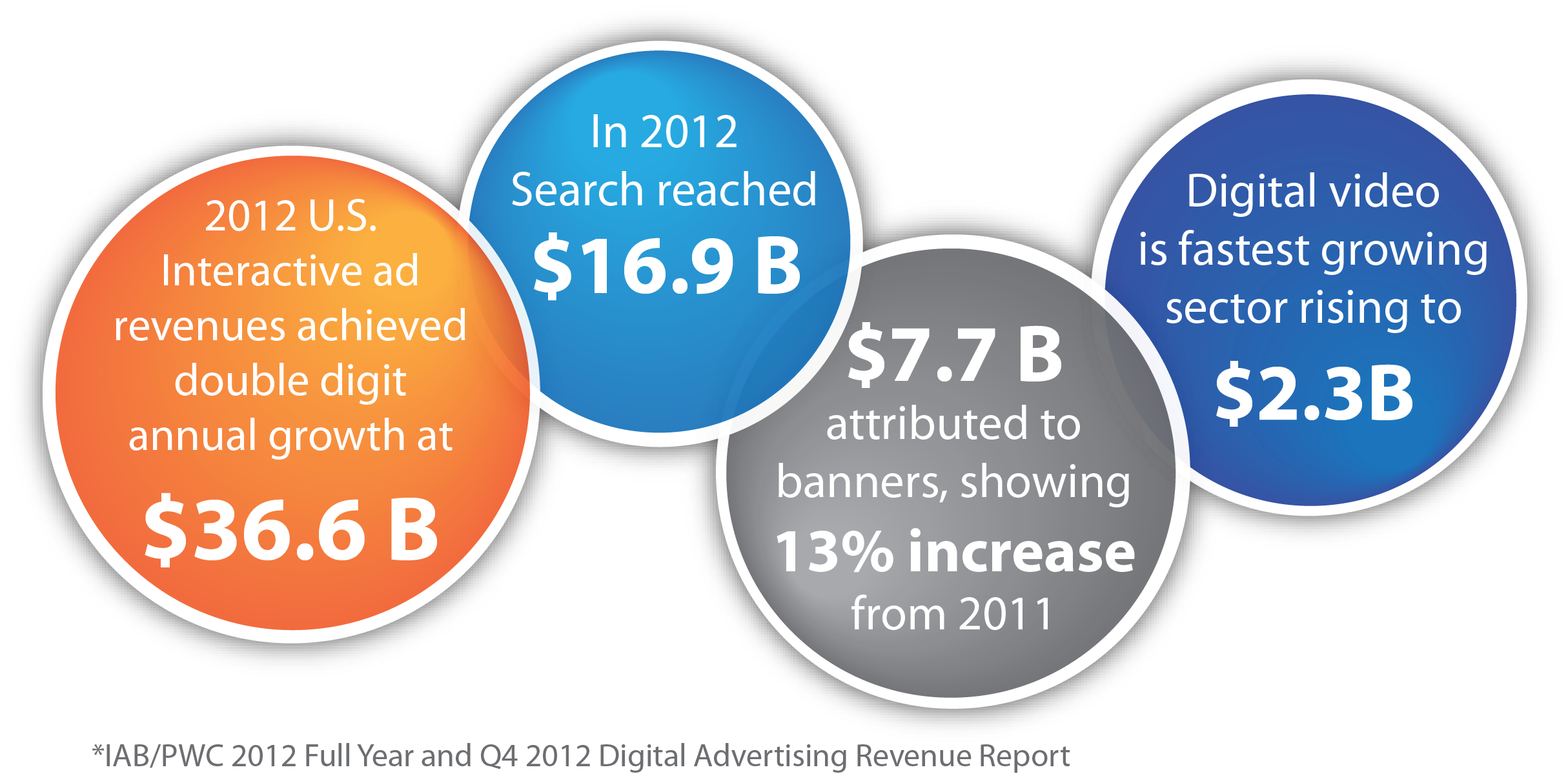Data: The Digital Common Denominator
In April 2013, the IAB released a report that revealed double-digit growth for both search and display. Additionally, within digital, video was named the fastest-growing sector, reaching $2.3 billion. I spoke with three industry experts in display, search and video to gain deeper insights into how and why search, display and video will continue to […]
In April 2013, the IAB released a report that revealed double-digit growth for both search and display. Additionally, within digital, video was named the fastest-growing sector, reaching $2.3 billion. I spoke with three industry experts in display, search and video to gain deeper insights into how and why search, display and video will continue to show a positive curve.
Display: Audience Buying In Prime Time
When it comes to display, it’s obvious that the driving force behind its growth is data.
Gerry Bavaro, Chief Strategy Officer of Resolution Media, says, “Audience-based planning and innovation in display ad formats are two main factors to growth.” Bavaro explains audience planning and buying even further, citing that targeting capabilities across ad exchanges and growing marketplace-based media (e.g., Facebook) are responsible for the continued rise.
The second factor that Bavaro highlights is innovation in display ad formats, including rich media, technology platforms and processes for powering dynamic creative. Bavaro adds, “The right audience, right time and context are just part of the display value chain; rich media display ads and more relevant, personalized messaging has boosted growth and performance in display advertising.”
Overall, the biggest player in display’s growth is data: how it’s used, when it’s used and why it’s used. As CMOs and agency partners consider audience insights, attribution and analytics, they will gain a better understanding of their display investment — especially in the area of ad targeting. Additionally, attribution could play a significant role in increasing digital display dollars over time.
Video: Bridging The Gap Between Data & Branding
The IAB also reported that the number of video ad impressions bought within real-time bidding (RTB) exchanges has doubled over the past year. Greg Smith, General Manager of VideoHub Marketplace, credits RTB growth and the available analytics as reasons for growth in video advertising.
Smith states, “Some marketers want to buy video much in the same way they buy display ads, while others prefer to buy video the same way they do for TV. The more media buying options we give marketers, the more comfortable they will be and the more the industry wins.”
The combination of video and data-driven advertising is a reason that we are seeing more brand dollars utilize data. Smith explains, “Targeting data can be used in conjunction with video advertising to create a strong halo brand effect around more direct response-oriented search and display campaigns. Marketers often divide budgets and objectives into branding and direct response, but online video can bridge the gap with more targeted branding messages.”
Aside from data, there is also the cultural shift that consumers are spending more time with tablets, mobile phones and laptops. According to Smith, “It’s getting harder each day for brand marketers to reach audience segments with just TV alone.” A Nielsen research study commissioned by the IAB earlier this year showed that online video ads scored higher than TV ads in terms of brand recall, message recall and ad likeability.
Deep analytics and metrics within the video channel have helped to prove its worth. For example, VideoHub created a metric called eQTM score, which helps marketers understand the quality of video ad inventory on a publisher’s site by measuring viewability, player size and time spent with a video ad.
Search: The Leading Source Of Data & Insights
Display, mobile and social advertising have all led to the growth in search advertising. Search is not just a bottom funnel conversion engine; while ad dollars are still being allocated to search advertising, marketers are also leveraging it for research and display advertising, such as search retargeting.
Joel Nierman, Marketing and Media Director at Critical Mass, calls search “the very first form of behavioral targeting.” Nierman adds, “It isn’t that display and interactive units are redefining search; rather, display and interactive advertising are now leveraging the direct search data and inferred insights as another source of behavioral data.”
Nierman says, “Mobile and social have helped search expand beyond Google and Bing and impact search simply as another data layer combination. They can be powerful allies for search because mobile and social are also self-declared data: What data is in their social profile? What content have they posted and what apps have they downloaded?”
Search will continue to maintain a significant share of ad spending. However, the real opportunity in search advertising can be found in how marketers choose to leverage it, and smart marketers will see the value beyond the big search engines.
From what I’ve seen and heard from these industry experts, it’s no secret that data is the largest contributing factor to digital growth. Digital should continue on a positive curve as more marketers embrace data and leverage it across channels. Explosive growth is still to come.
Contributing authors are invited to create content for Search Engine Land and are chosen for their expertise and contribution to the search community. Our contributors work under the oversight of the editorial staff and contributions are checked for quality and relevance to our readers. The opinions they express are their own.
Related stories
